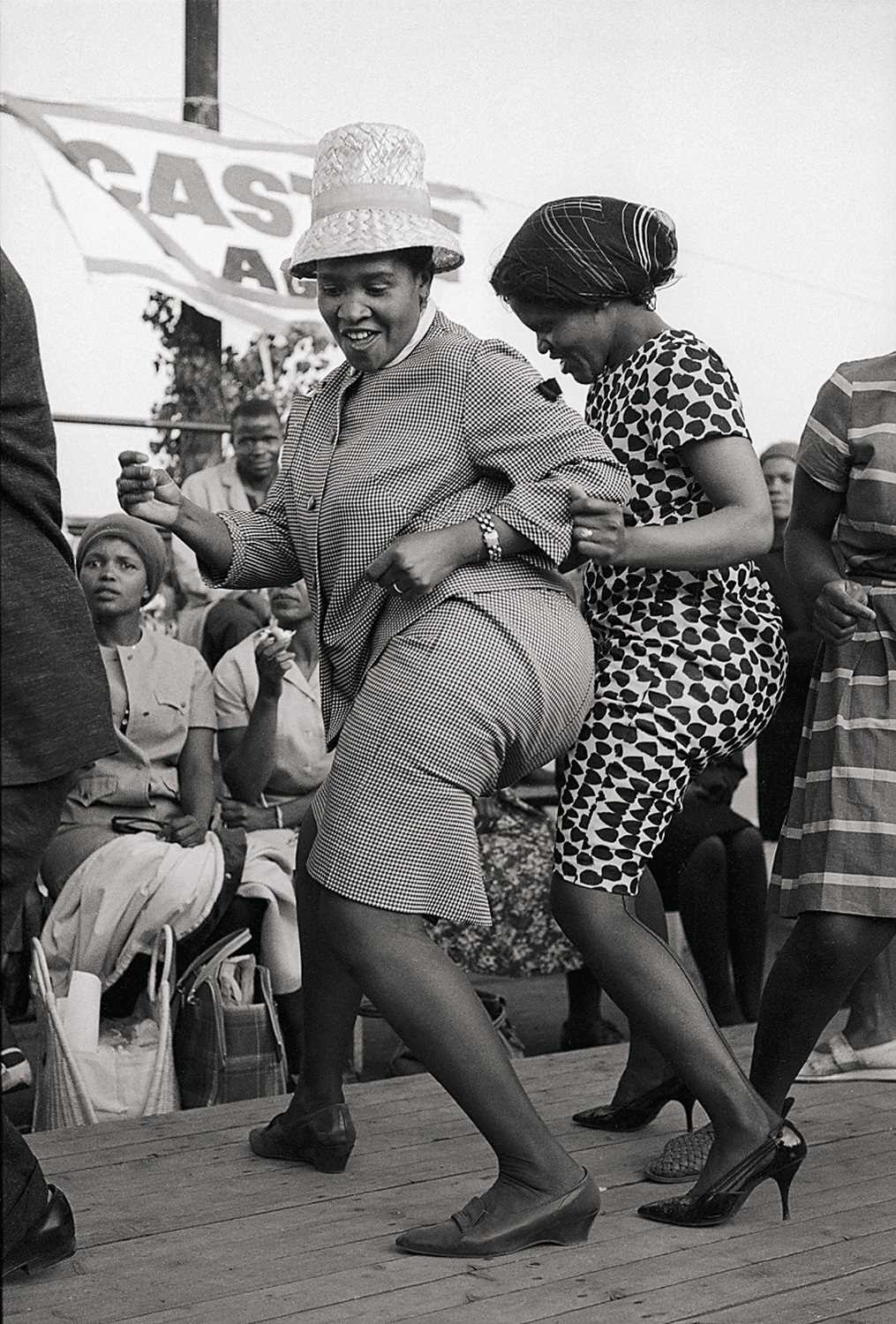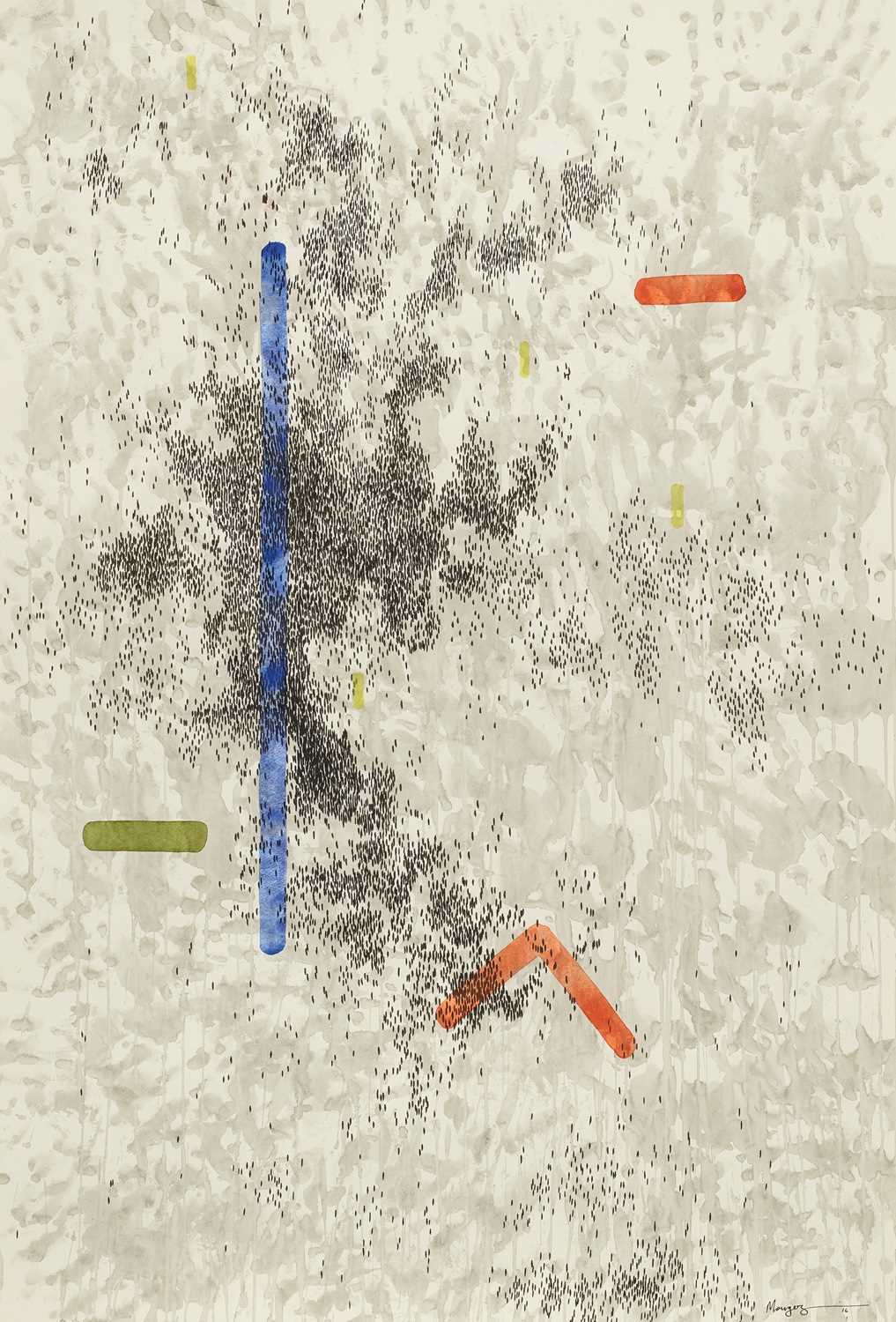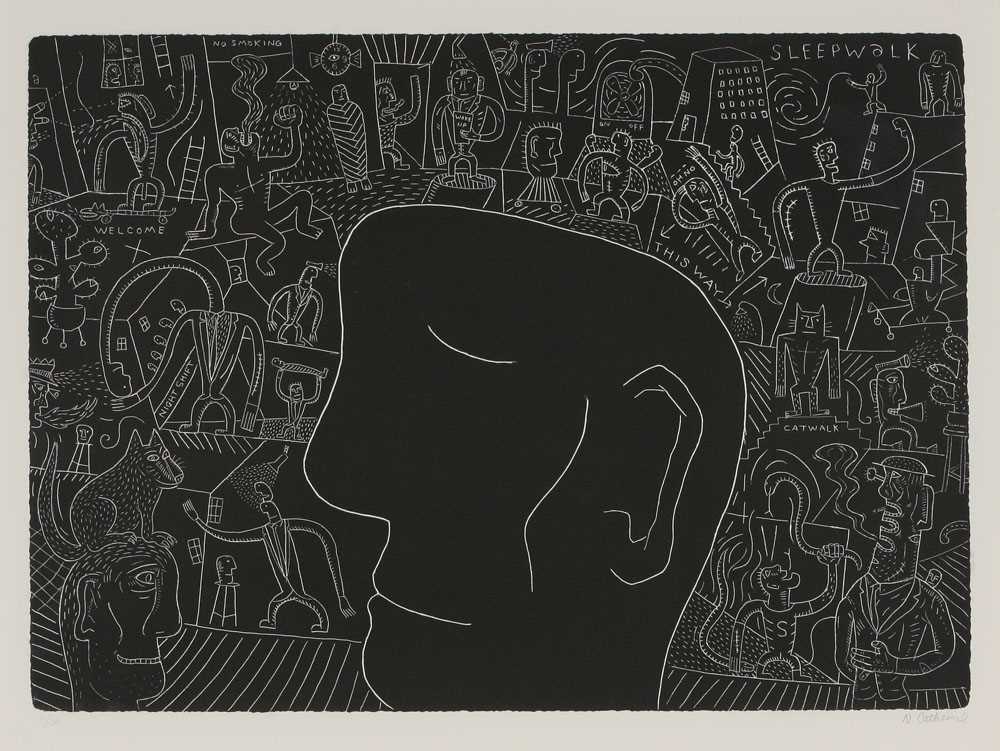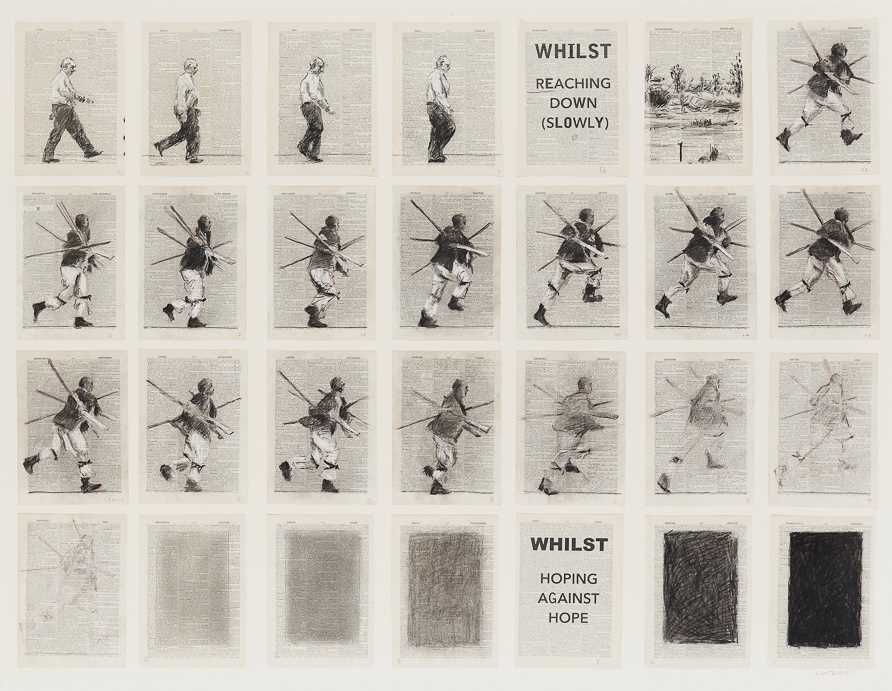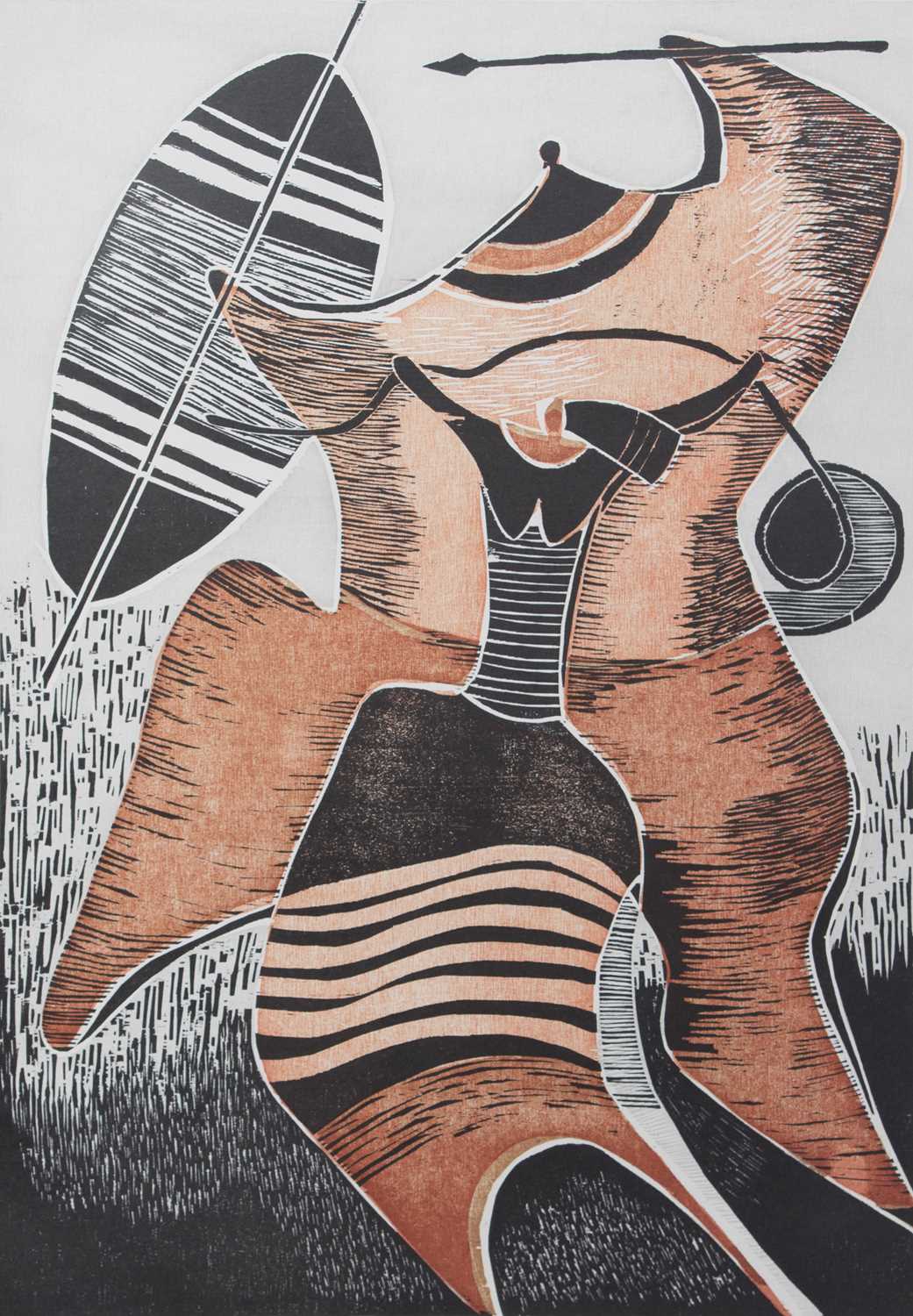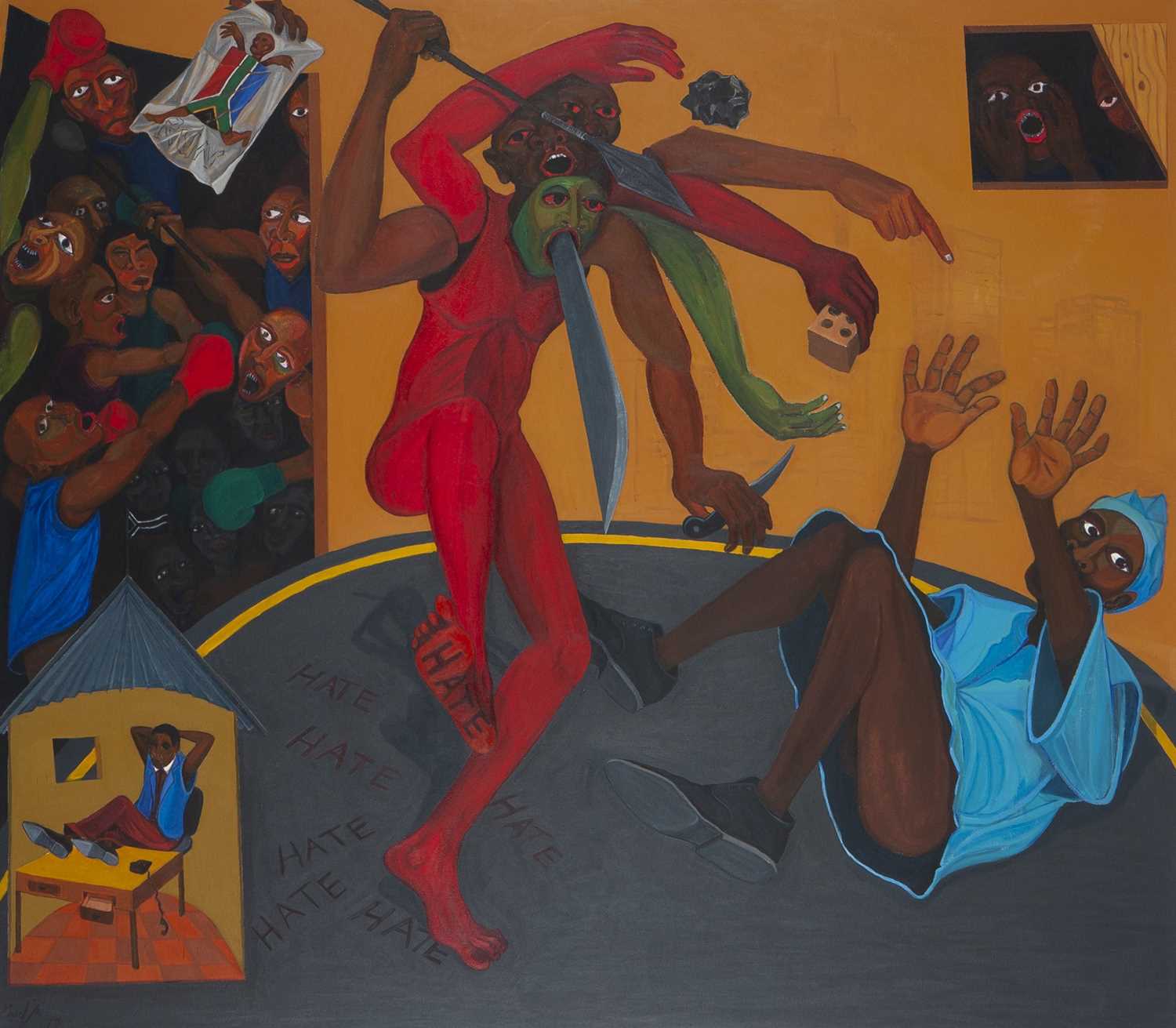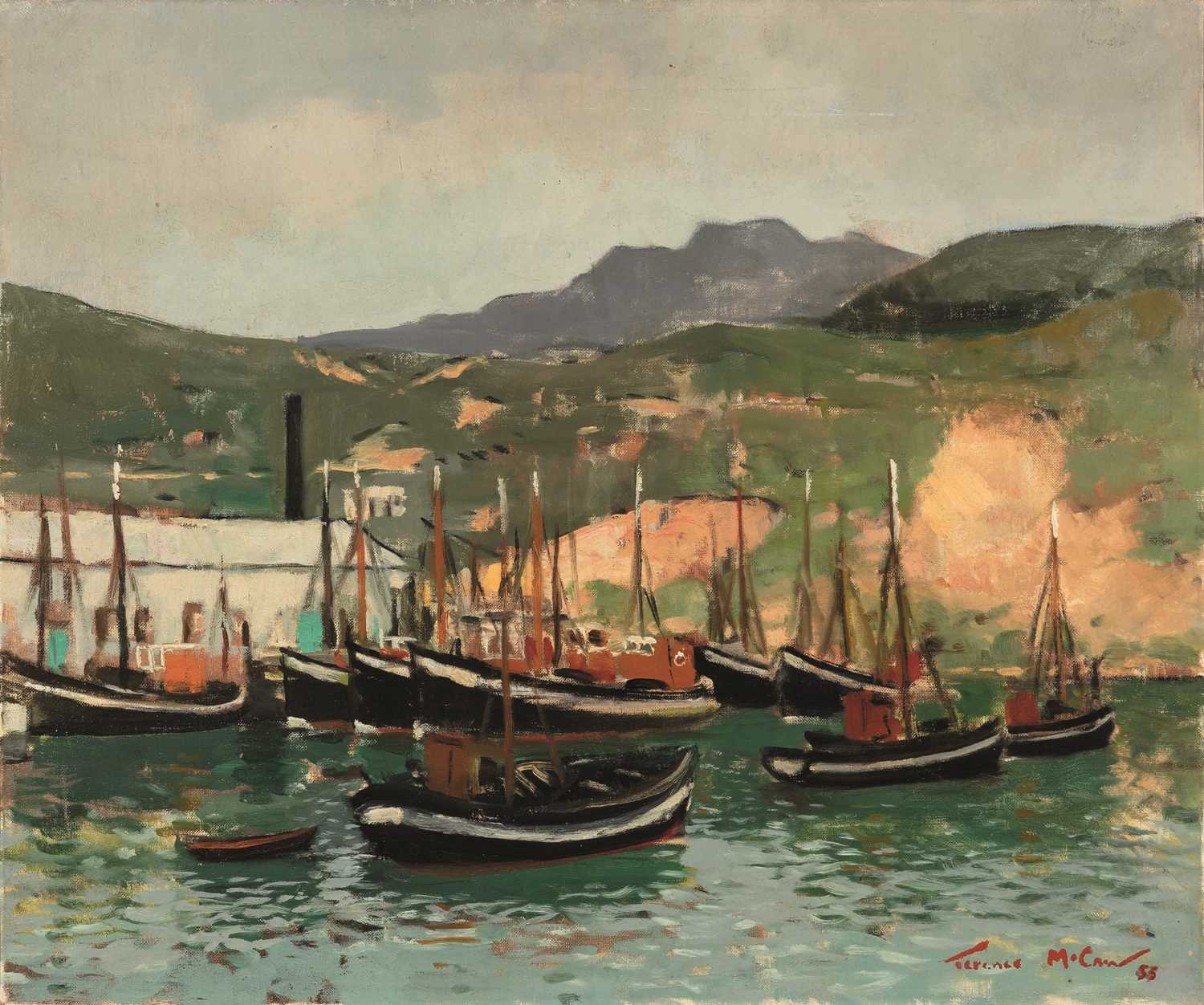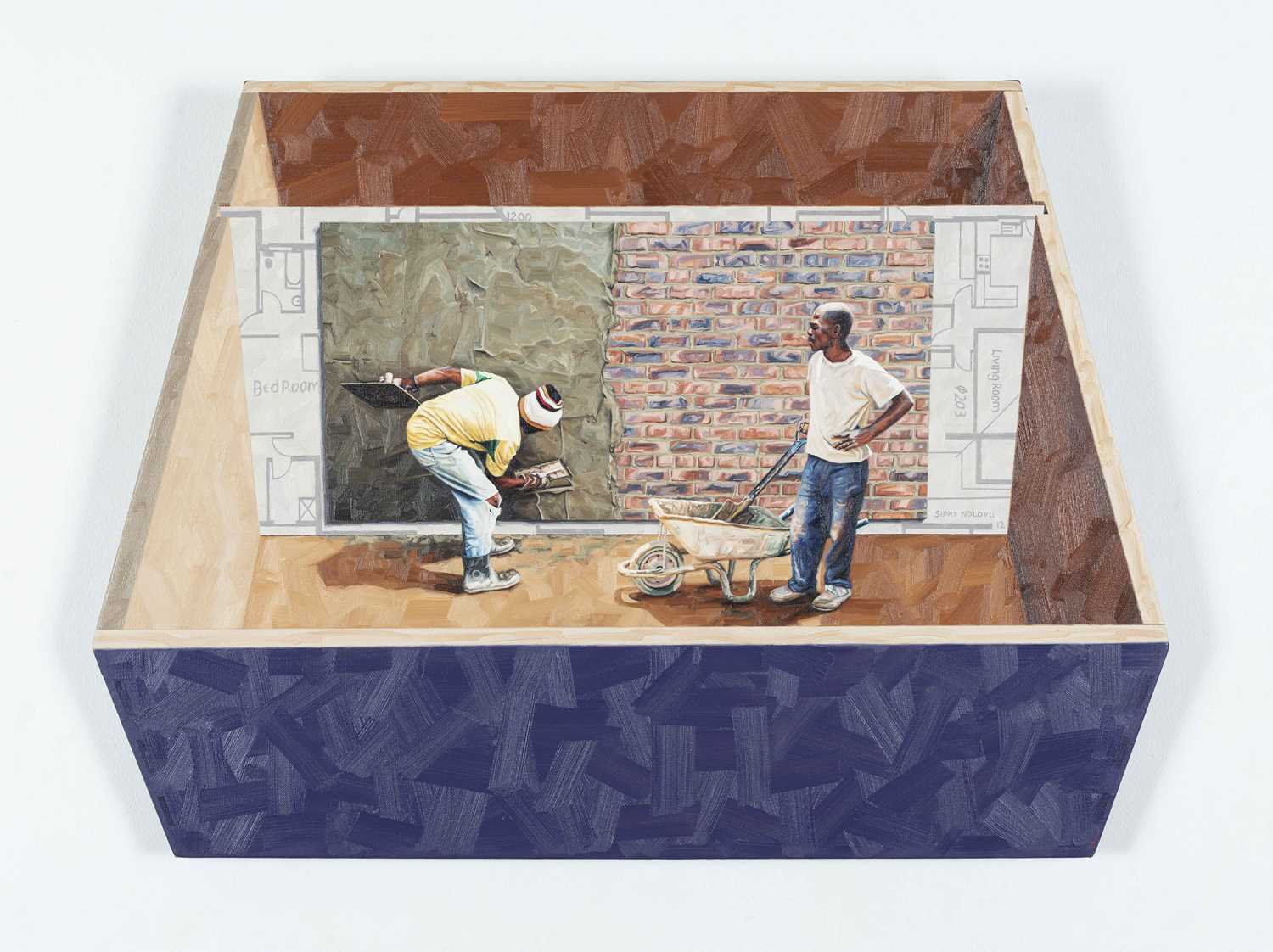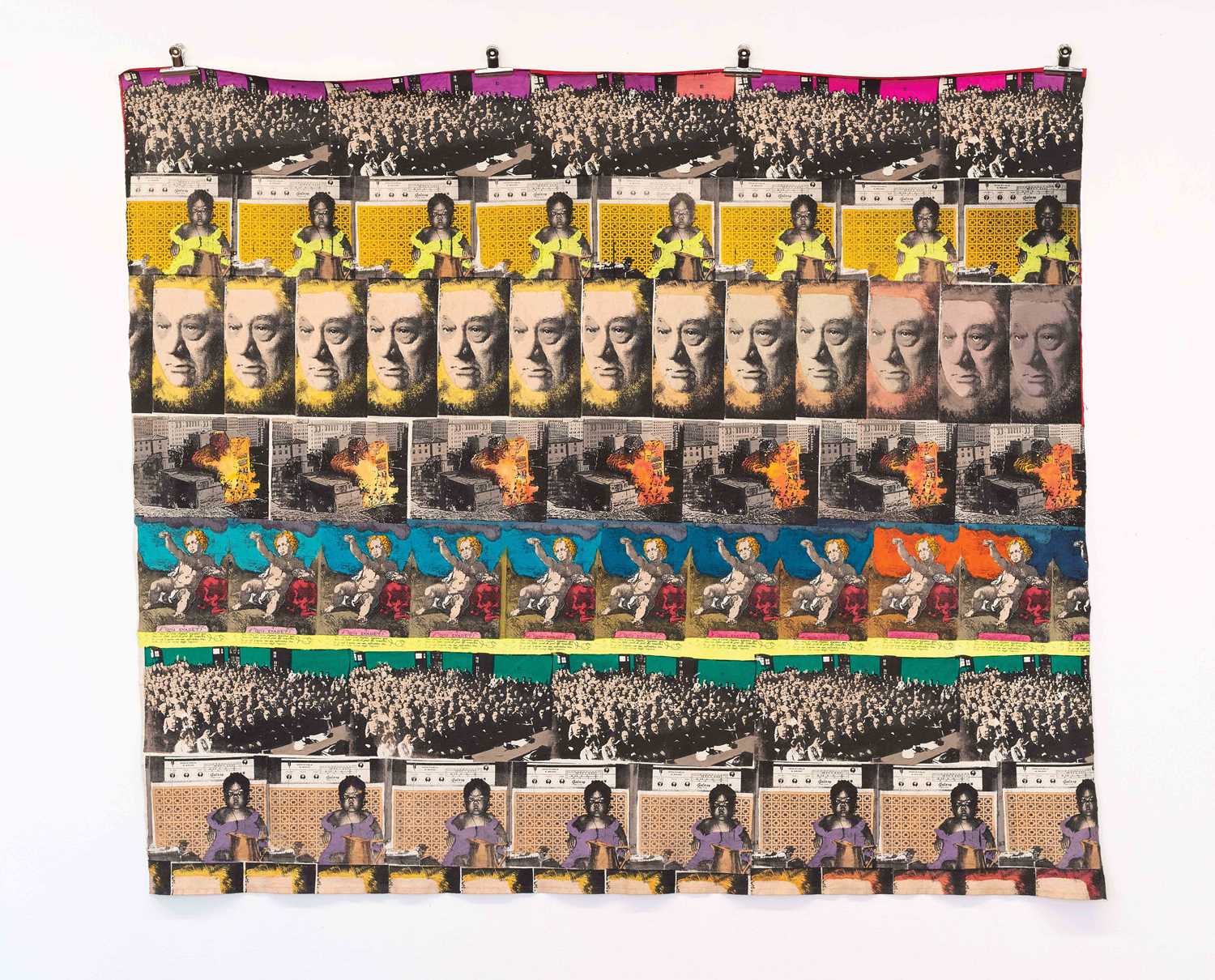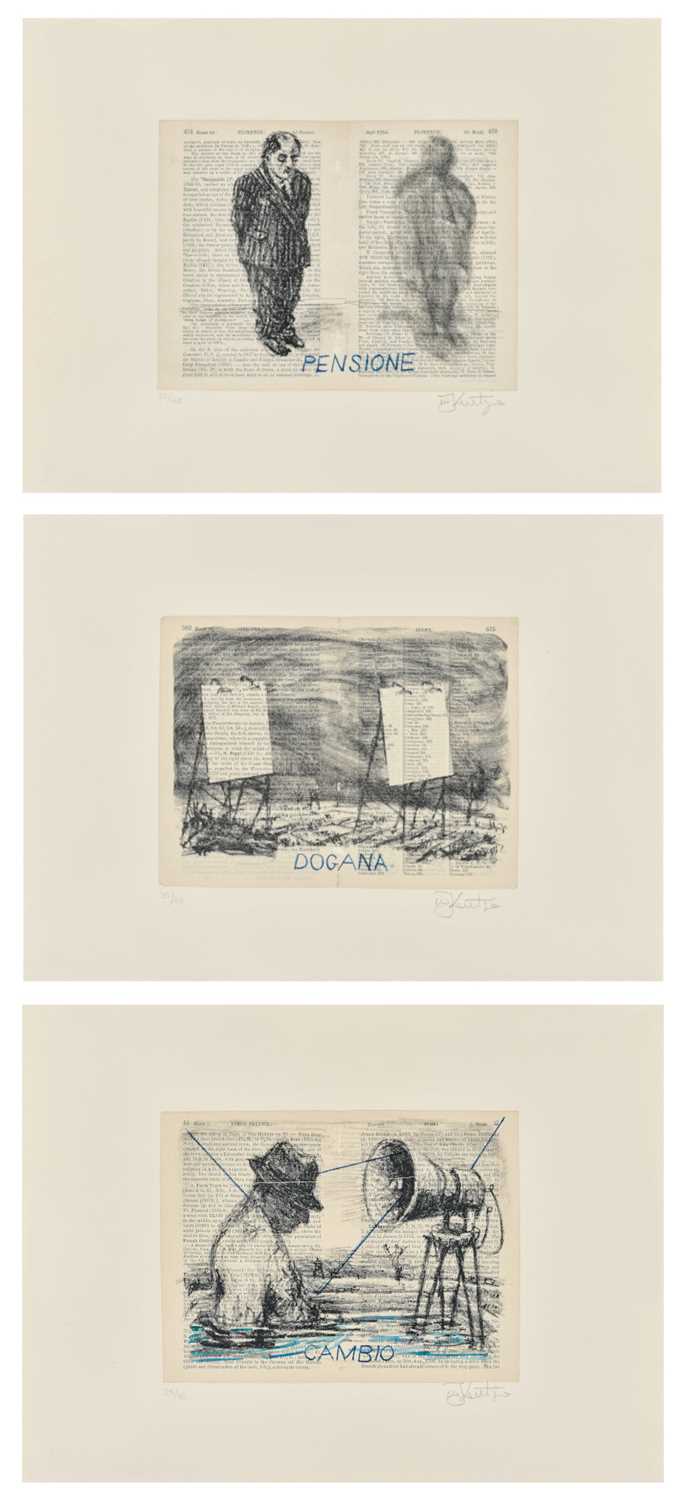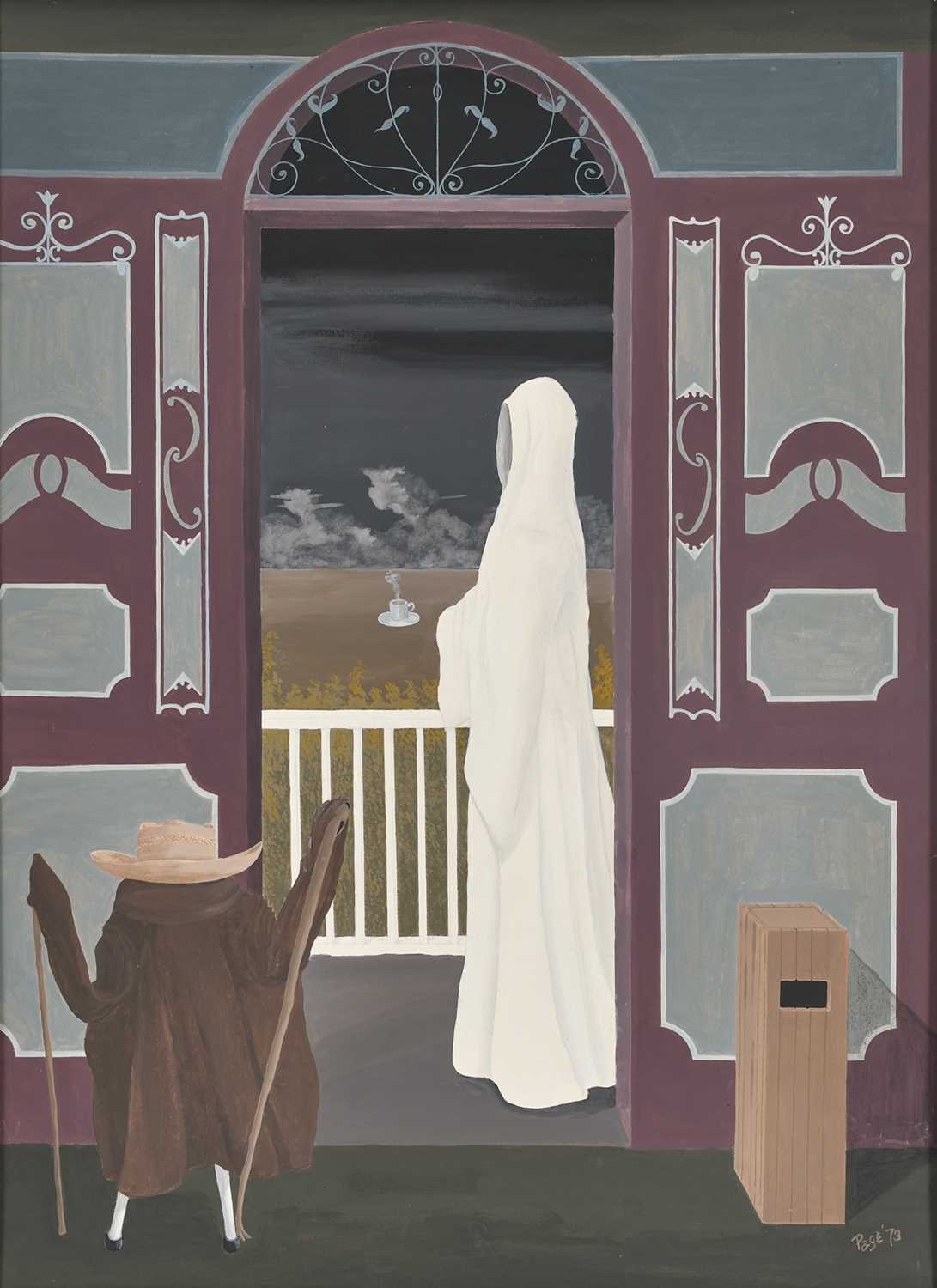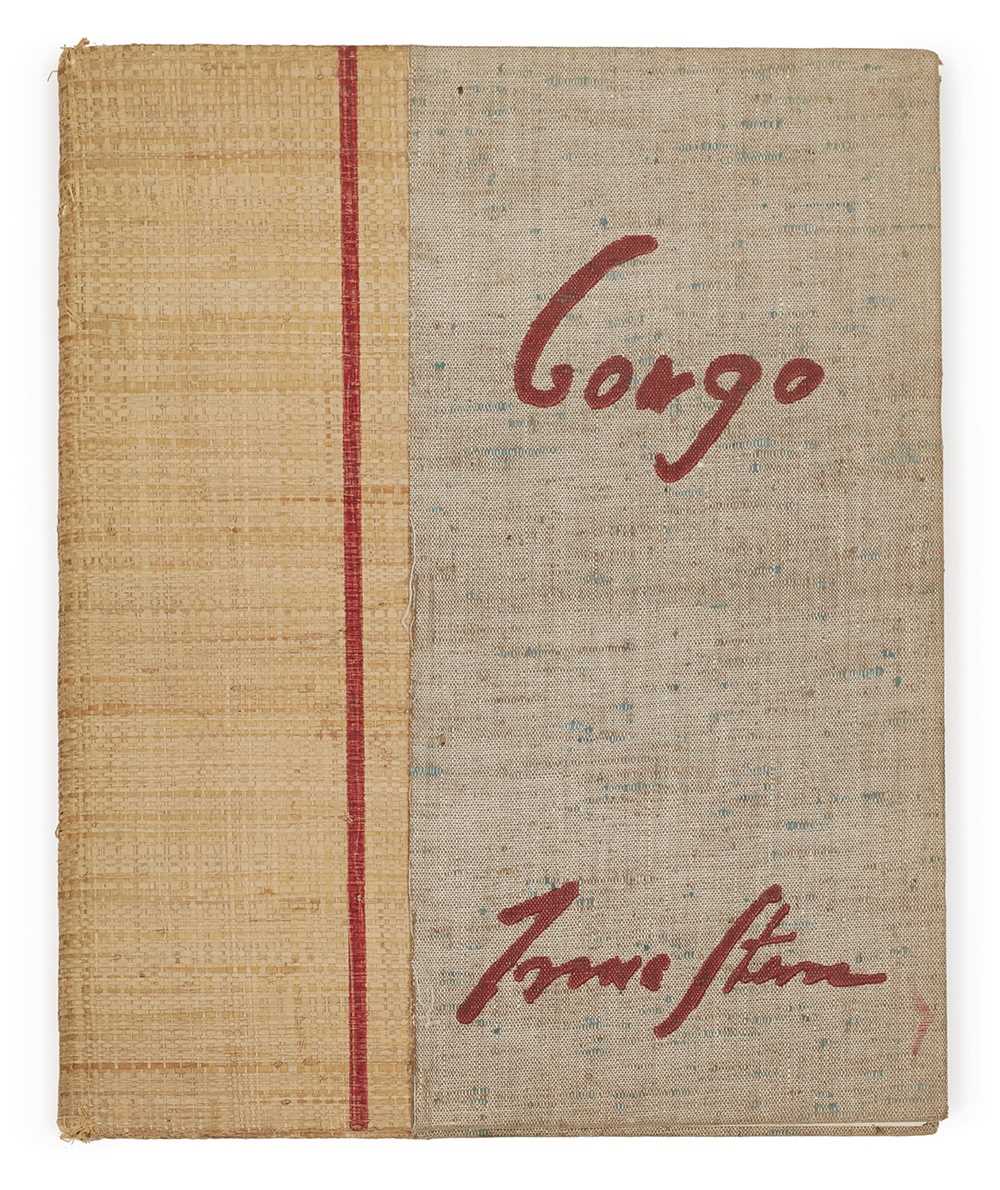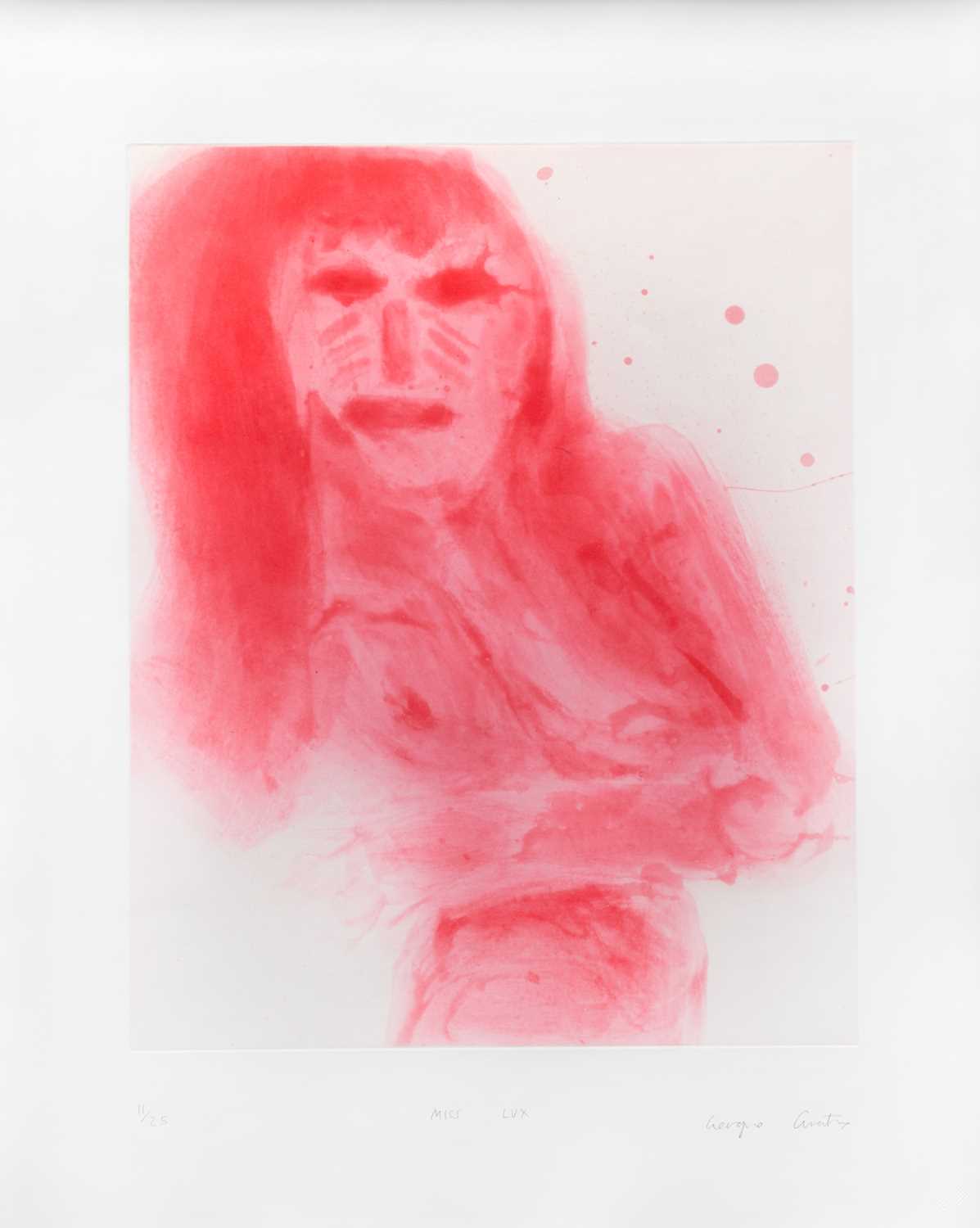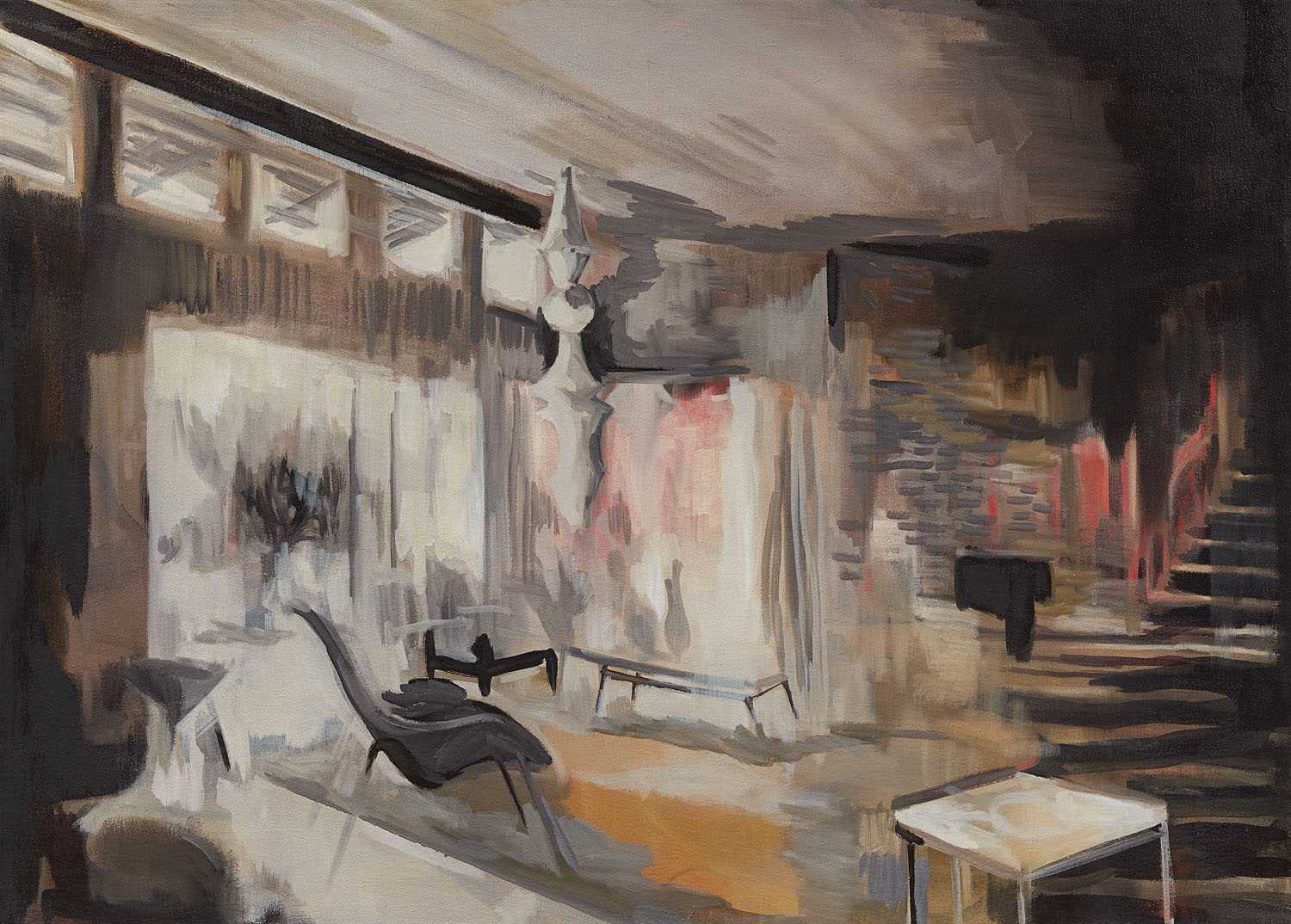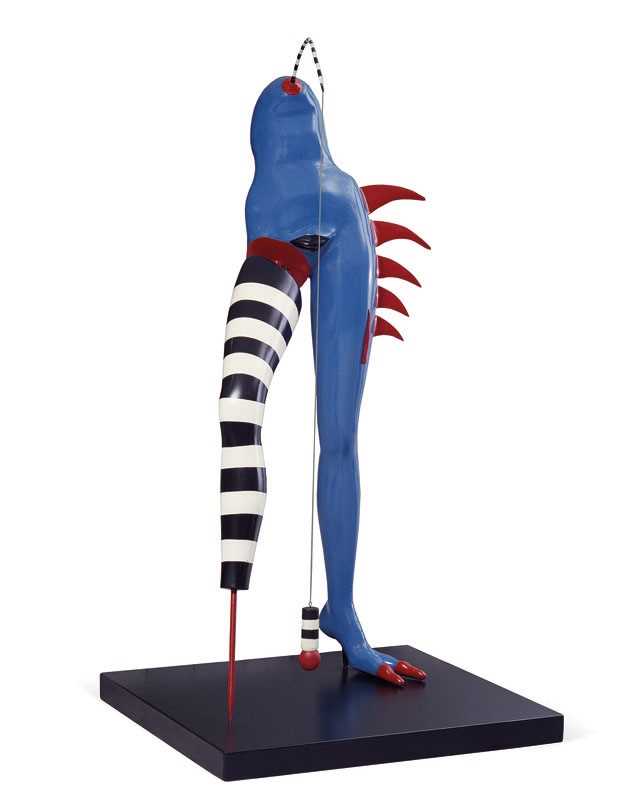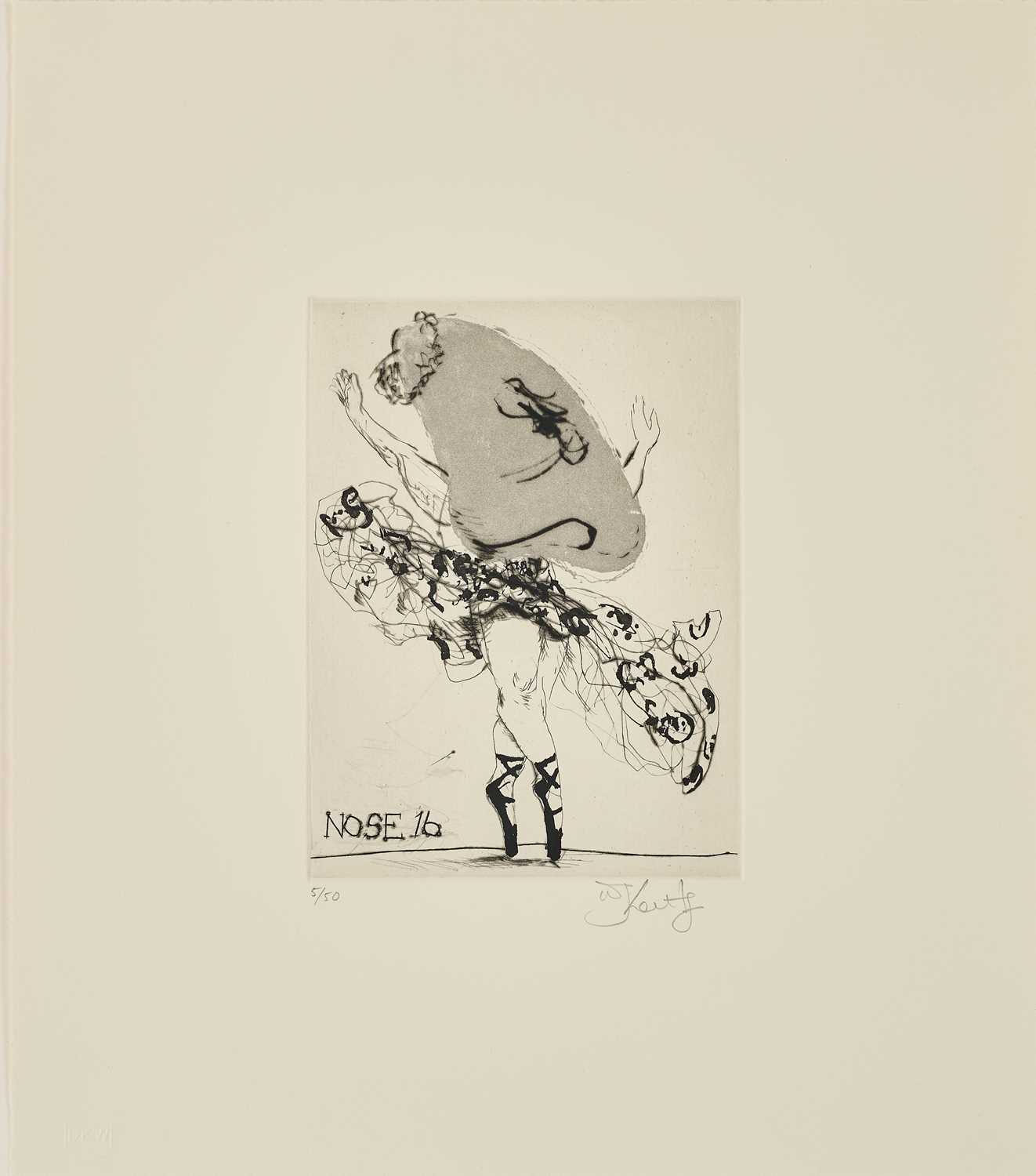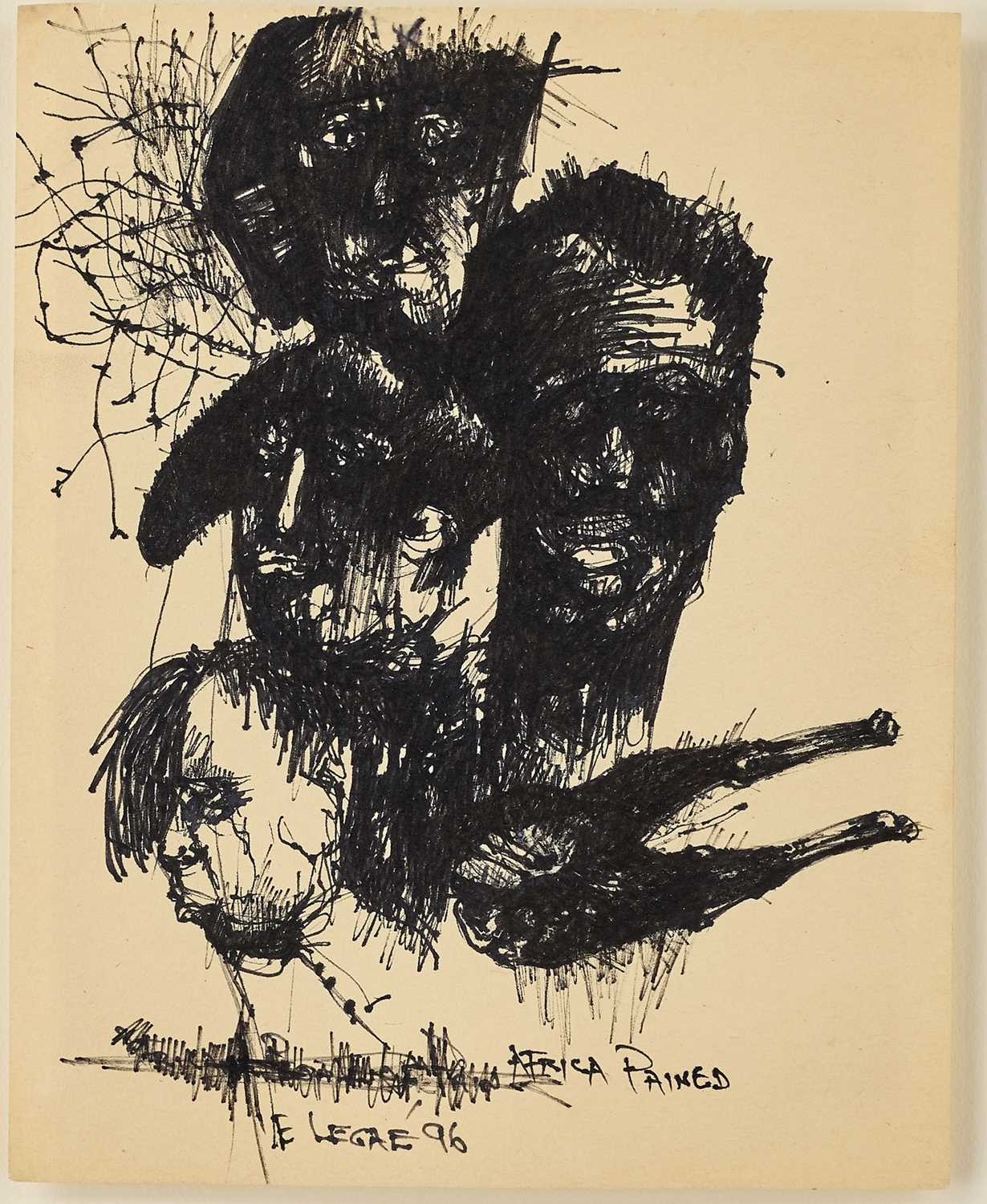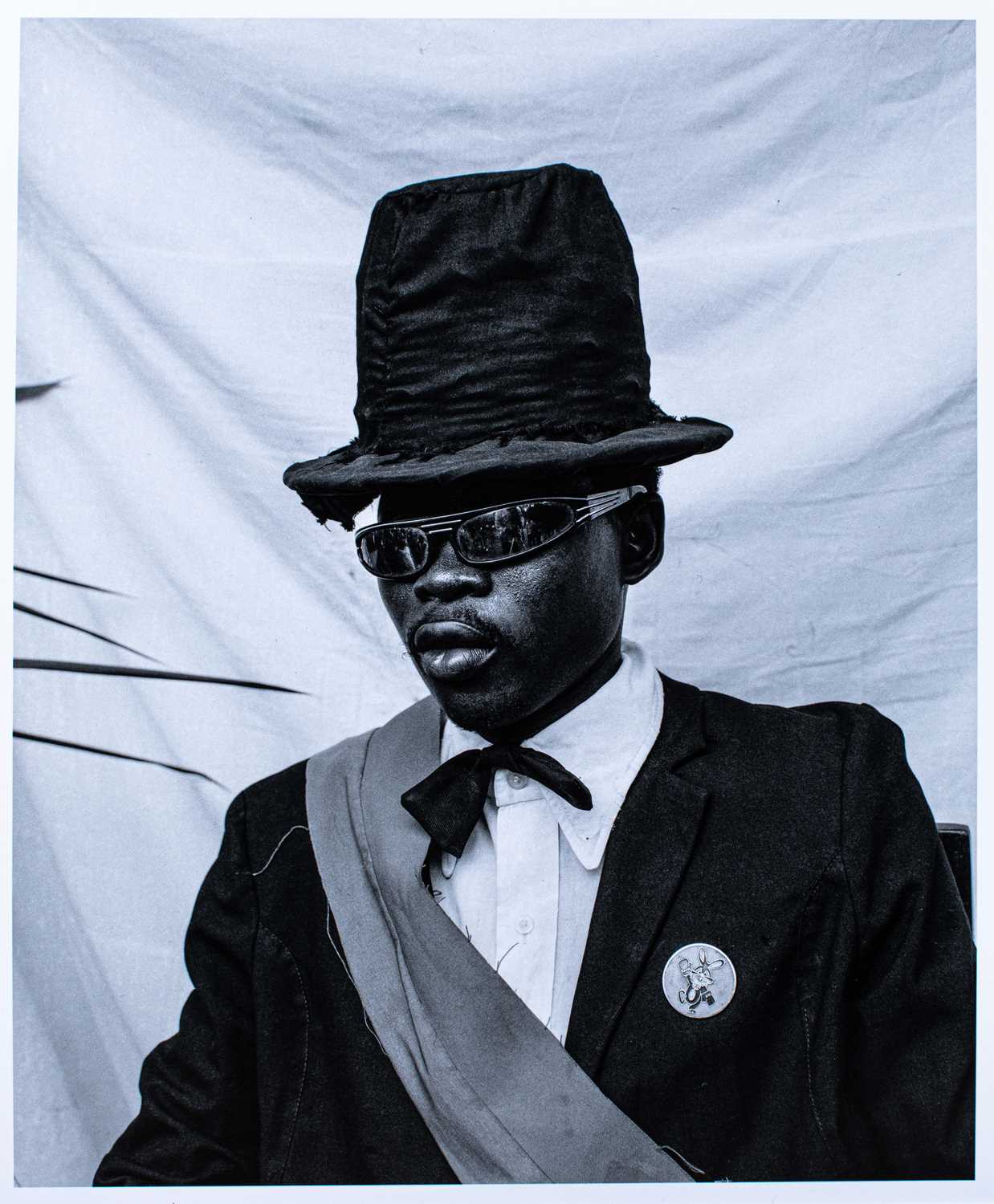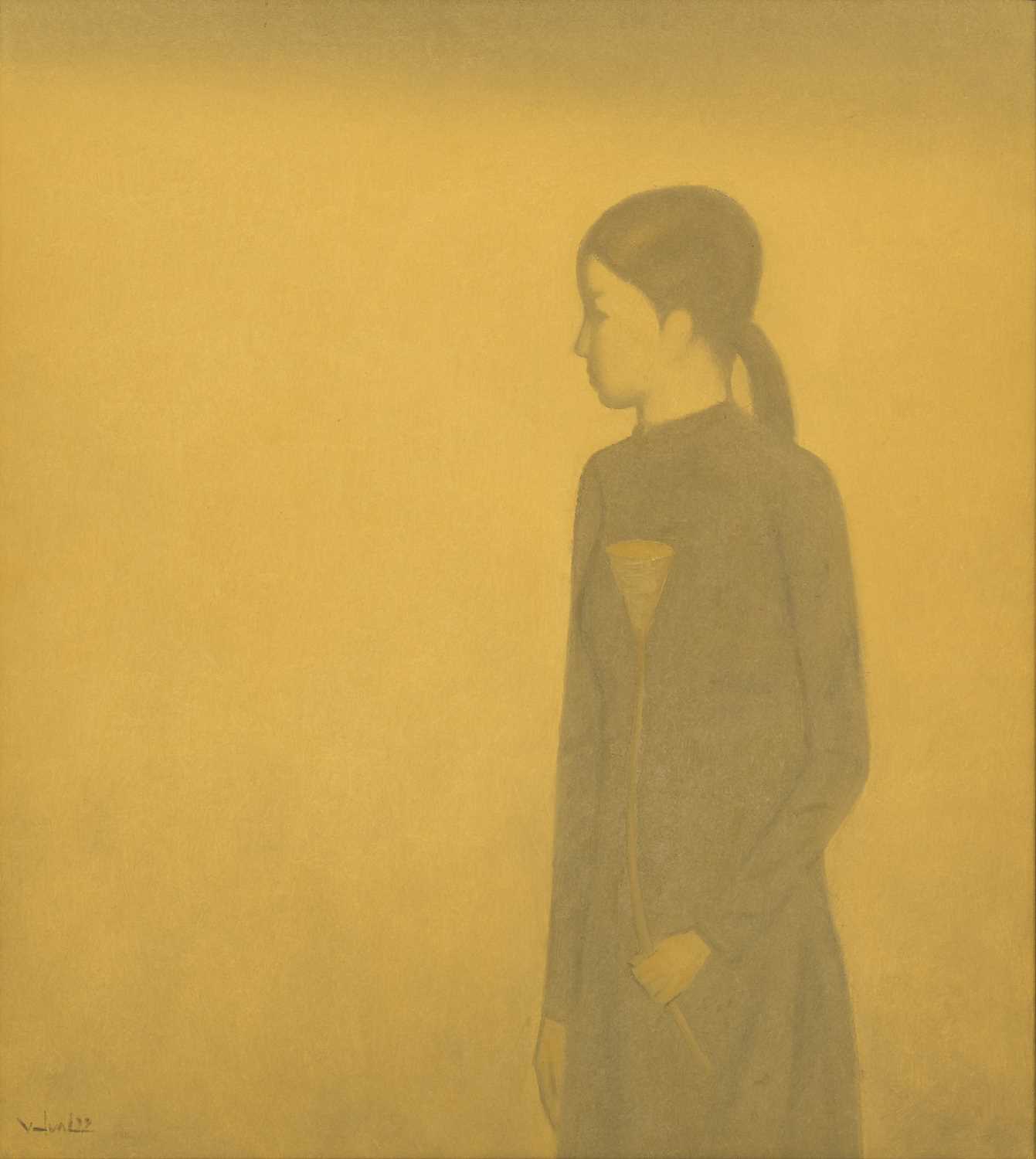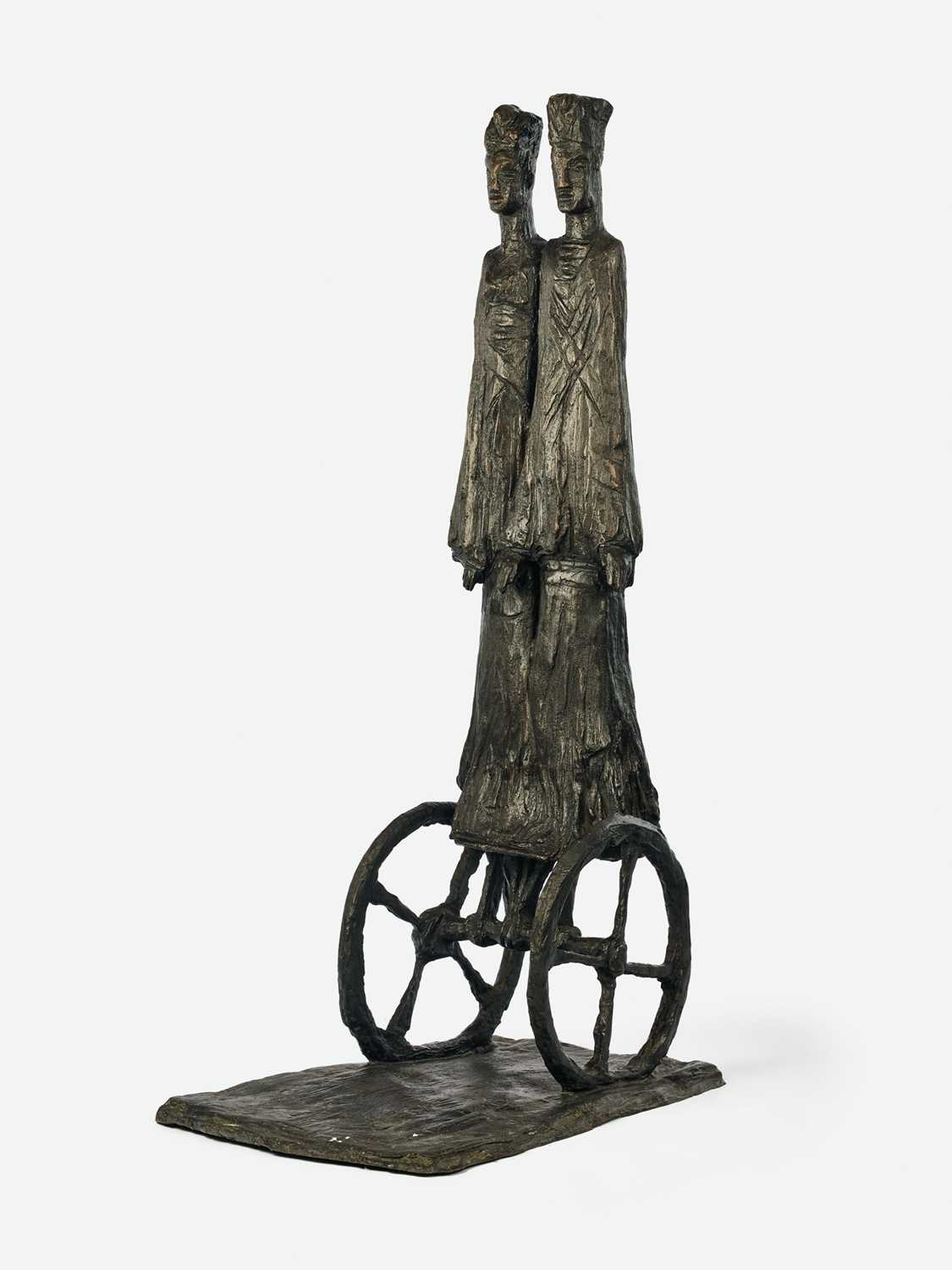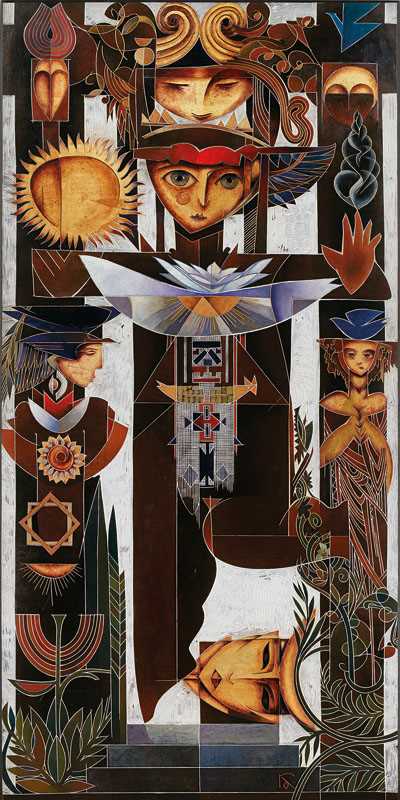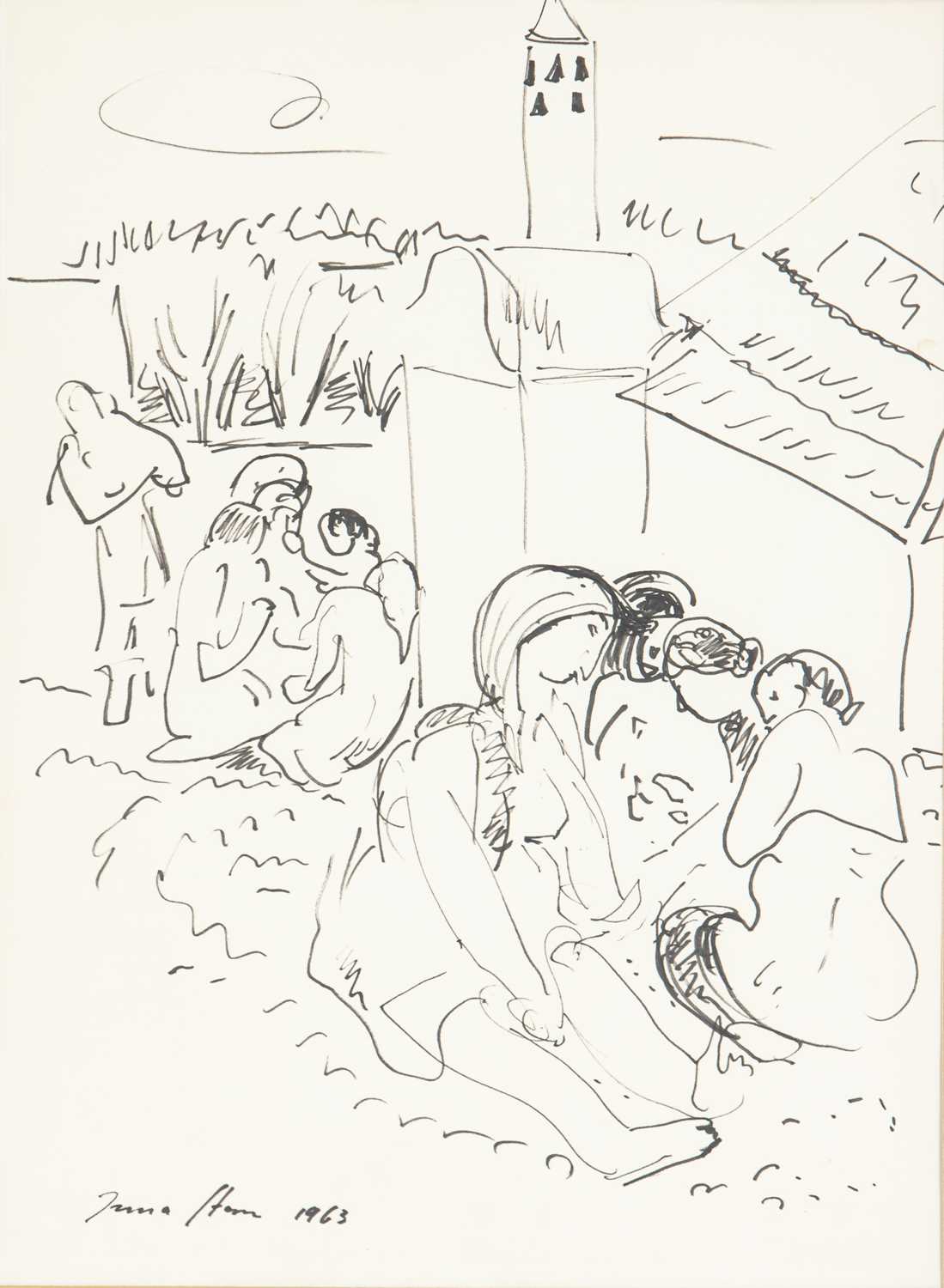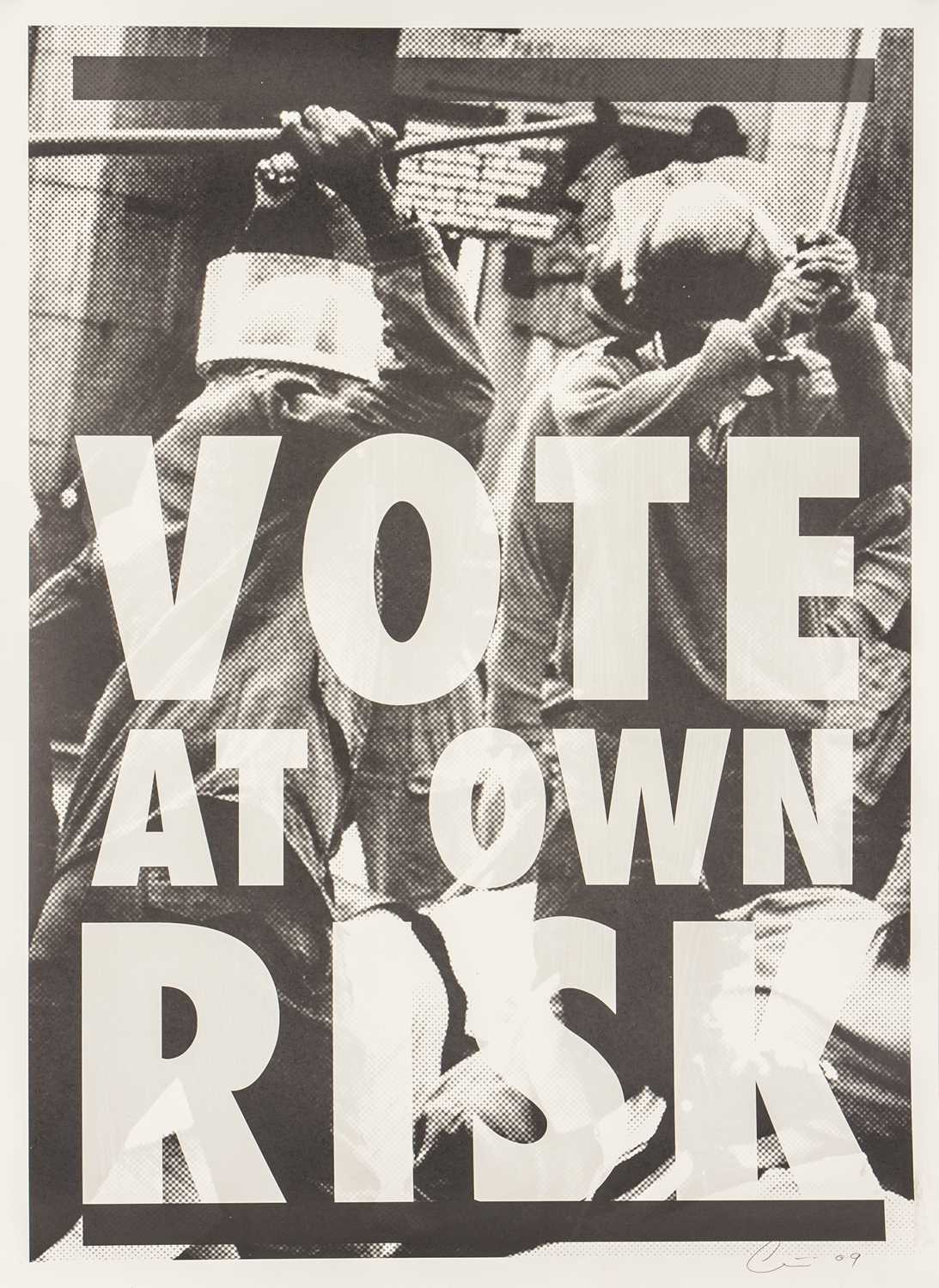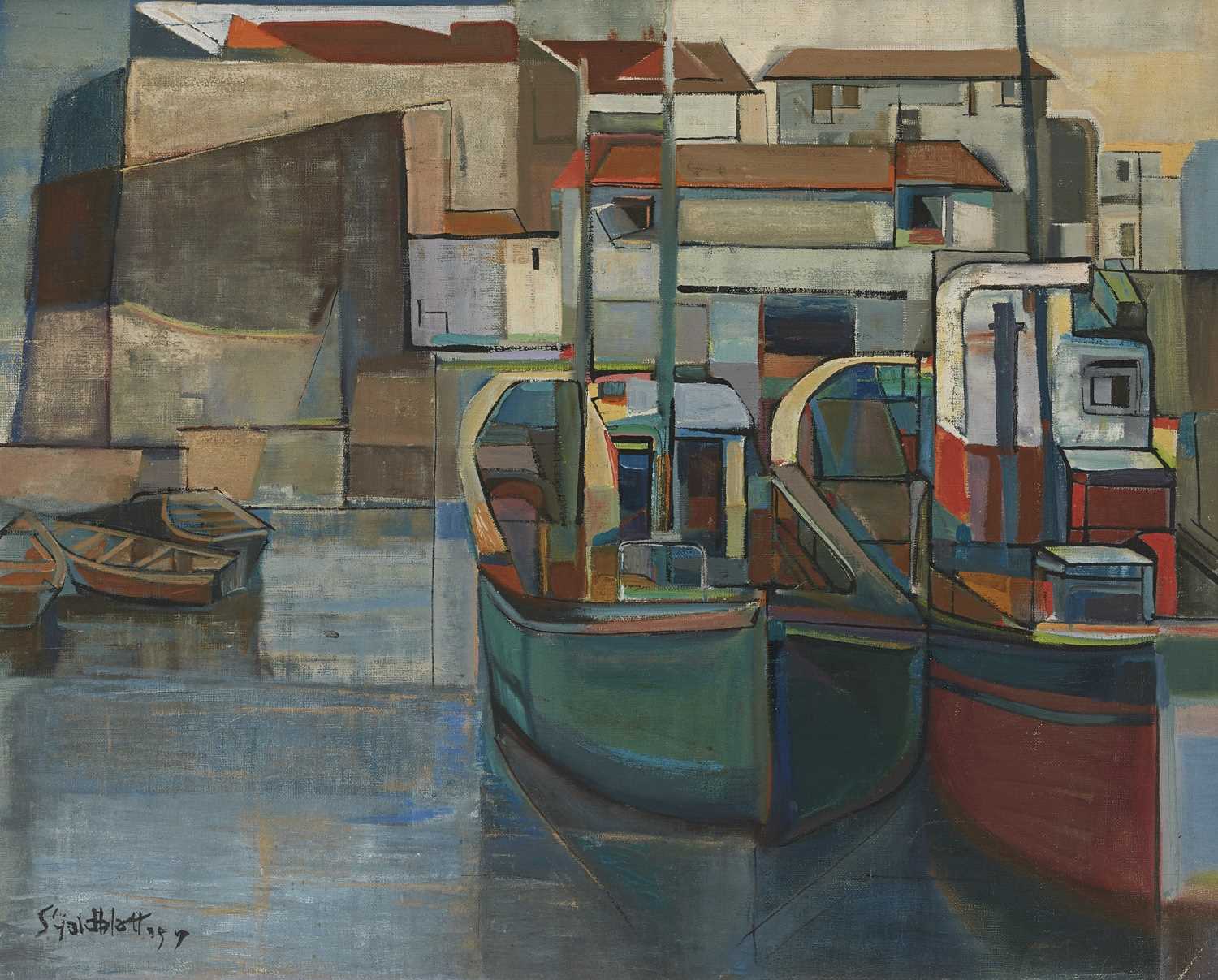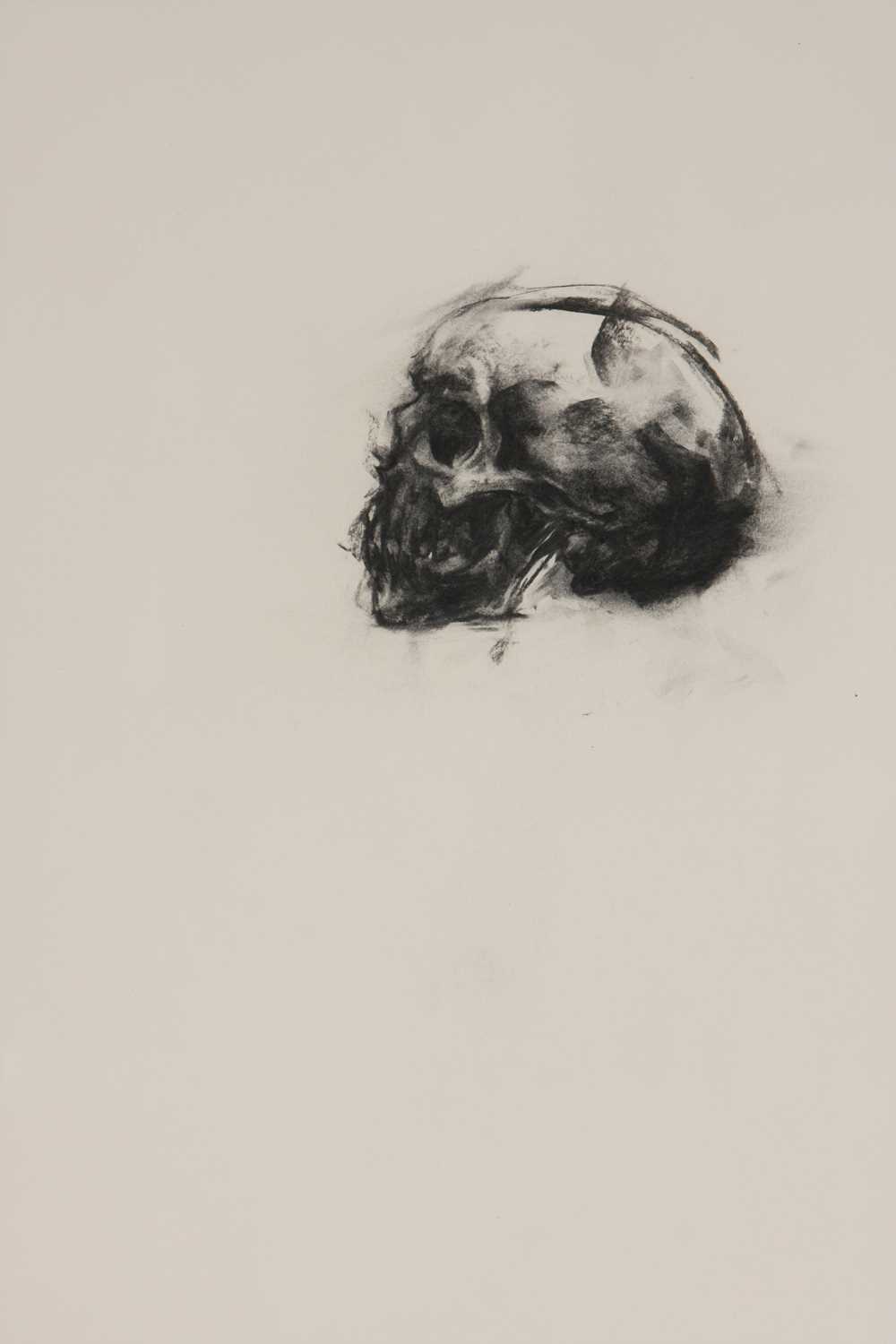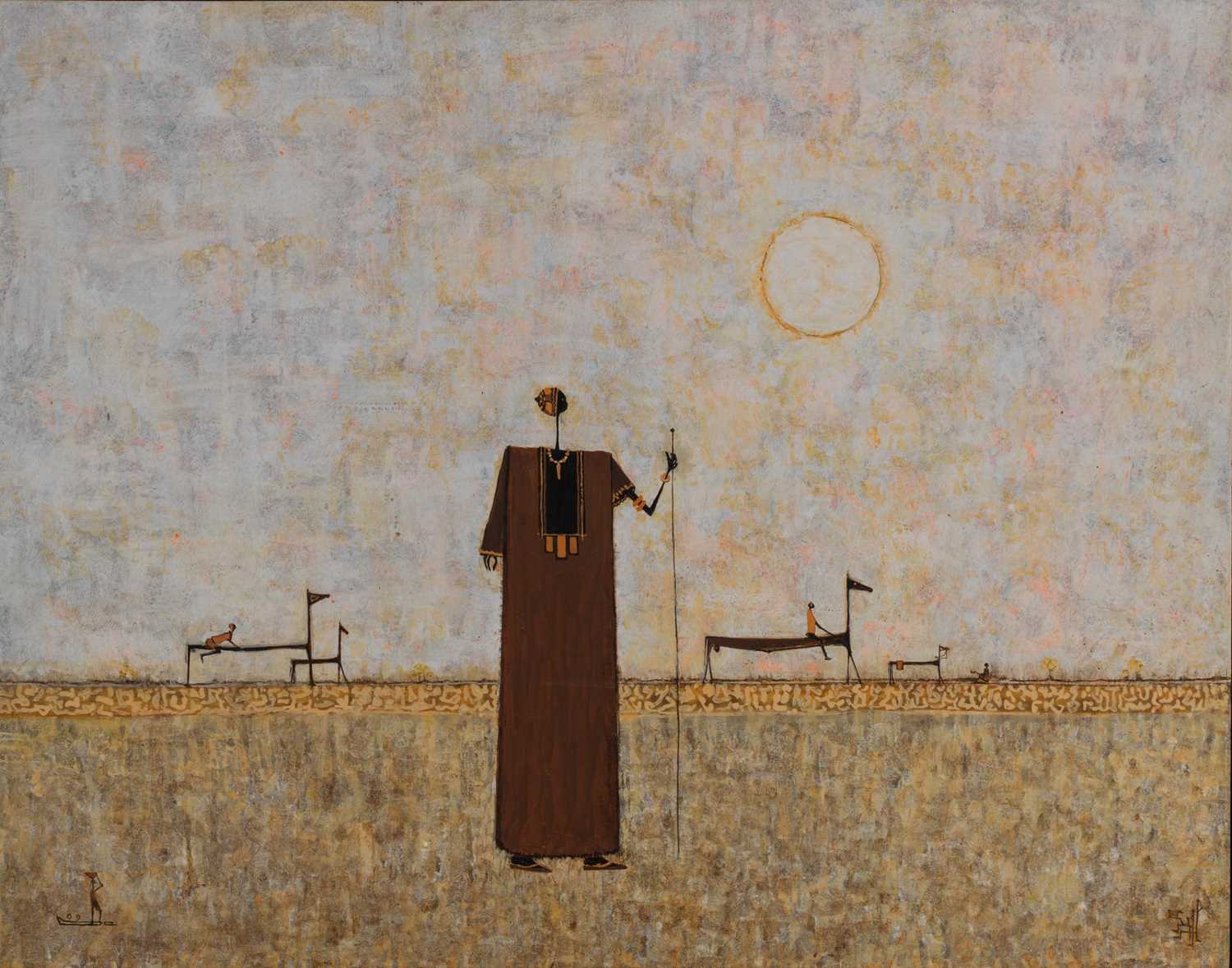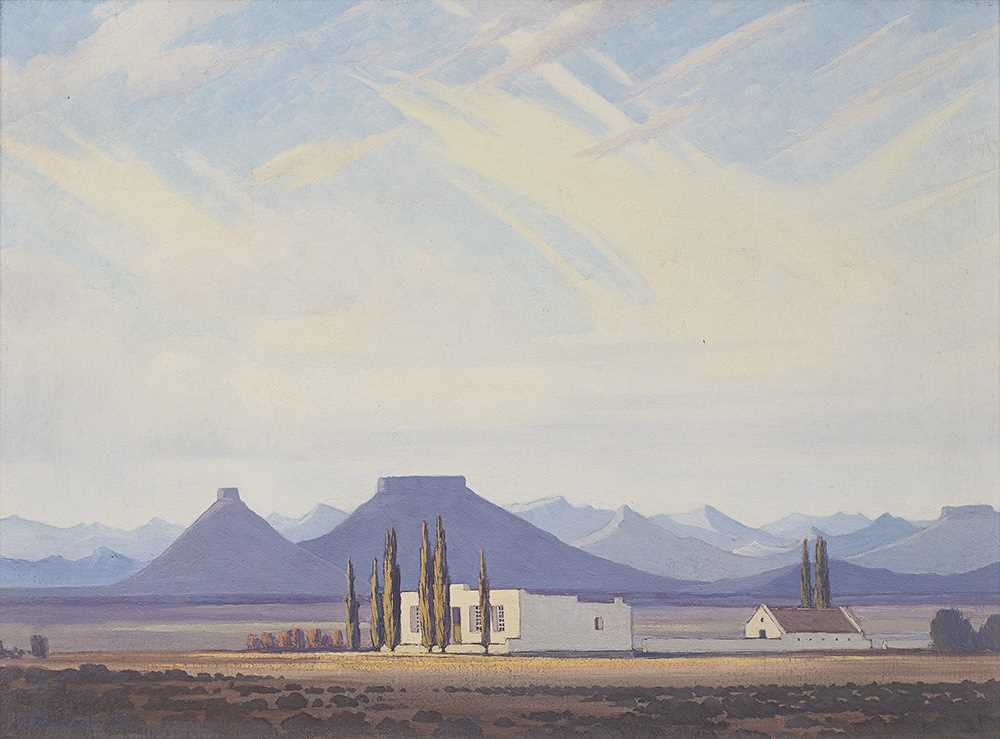3rd Sep, 2020 20:00
Modern & Contemporary Art
118
Gerard Sekoto (South Africa 1913–1993)
In the beer hall
oil on canvas
Artwork date: 1939/40
Signature details: signed bottom right
Condition Report
Cleaned and conserved, minor stable cracking, revarnished, paint stable and vibrant. Professional condition report available. In the original frame, minor general wear and abrasions in areas along the sides commensurate with age.
Please note, we are not qualified conservators and these reports give our opinion as to the general condition of the works. We advise that bidders view the lots in person to satisfy themselves with the condition of prospective purchases.
oil on canvas
Artwork date: 1939/40
Signature details: signed bottom right
(1)
41 x 51 cm
Notes:
Rare, early paintings such as this by celebrated South African artist, Gerard Sekoto, are seldom seen at auction. Produced before Sekoto’s departure for Paris in 1947, they are highly sought after by serious collectors, who recognize the value in these early works. Barbara Lindop, author of numerous publications and acknowledged authority on Sekoto’s oeuvre, commented on such an exceptional, undocumented work being found and brought to market. “It could well be from the first or second exhibition sale at the Gainsborough Gallery. I’d date it to circa 1939/40 – an early example of his new found oil technique.”1 By 1938 Sekoto had left rural Botshabelo and settled in thriving Sophiatown, the legendary black cultural hub of Johannesburg, made famous by the likes of Miriam Makeba, the so-called African songbird. Could this be a beer hall in Sophiatown? Men gather together at the end of the day, the slowly setting sun casting long shadows where they stand or sit together, enjoying a flask of beer. The focus here is on the enjoyment of one another’s company and the slow savouring of traditionally brewed beer as a marker of the boundary between work and relaxation, or between social gathering and home. It is this place and this time that Sekoto brings to life in his early painting, evoking the lives lived there in the late 1930s. Alive to the scene before him, Sekoto depicts his fellow human beings with sensitivity, warmth and empathy. Tonal variations of the primary colours animate the composition while the warm, glowing light emphasises the camaraderie between the men. Lindop describes the‘humanity of his pre-exile paintings: his lack of sentimentality, his commitment to truth, a poignant realism and an acute awareness of the heroism revealed in ordinary human life’.2 his is the place evoked in Miriam Makeba’s haunting song, Sophiatown is Gone, expressing the anguish of residents when the apartheid regime tore down their homes in the 1950s, breaking up families and dispersing communities. Its lyrics continue to haunt us:
Old Sophia is gone forever
Sweet Sophia is broken forever
Gone are those lovely bodies where the old folks play3
Sekoto’s painting is one of the earliest images of black people painted sympathetically by a black artist. As Lize van Robbroeck has articulated, “images of black people by black artists served to counter the stereotypical and picturesque depiction of Africans as forever caught, like flies in amber, in a pre-colonial, “tribal” moment”.4 She points out that Sekoto consciously chose to work in a naturalistic mode, in the traditional medium of oil on canvas, choosing a style and medium that would convey to white South Africans a high level of cultural attainment. Proud of his achievement, Sekoto maintained “I know that Art is an interior human language that accepts no colour bar”.5 By 1939 not only had Sekoto had his first exhibition at the Gainsborough Gallery in Johannesburg, but his talent was recognised and given wider exposure through his inclusion in the 20th Exhibition of the South African Art Academy. He would exhibit twice again with the South African Art Academy in 1941 and 42. In 1947 Sekoto caught the attention of the Queen Mother with whom he was photographed before his painting, Sixpence a Door, on the South African Touring Exhibition at the Tate Gallery, London. It was also in 1947 that Sekoto left South Africa for Paris where in that year and the following he attended drawing classes at Académie de la Grande Chaumière, funding his studies and earning a living by playing the piano in jazz bars by night. Sekoto continued to live in self-imposed exile in France for forty-six years. Though he never returned, he is remembered and revered as ‘the father’ of black modernism in South Africa. Largely overlooked by apartheid during his lifetime, Sekoto is now recognised for his extraordinary portrayals of the lives lived by black South Africans.
Emma Bedford
Sources:
1 Email from Barbara Lindop to Emma Bedford, 21 May 2020.
2 Lindop, B. (1995). Sekoto: The Art of Gerard Sekoto. London: Pavilion Books, p.10.
3 Sophiatown is Gone https://www.youtube.com/watch?v=JRycpD8aHN8. Find also Khawuleza with introduction by Makebahttps://www.youtube.com/watch?v=V74f9eIi9c0 to hear her insights into what life was like for black South Africans then.
4 Van Robbroeck, L. (2011). “That magnificent generation: Tradition and modernity in the lives, art and politics of the first modern blackpainters” in Carman. J. ed. Visual Century: South African Art in Context, Johannesburg: Wits University Press, p. 119.
5 Sekoto, G. (1957). “A South African Artist”. Présence Africaine. November, 14/15, Paris, p. 282.
You can place an absentee bid through our website - please sign in to your account on our website to proceed.
In the My Account tab you can also enter telephone bids, or email bids@aspireart.net to log telephone/absentee bids.
Join us on the day of the auction to follow and bid in real-time.
The auction will be live-streamed with an audio-visual feed.
Auction: Modern & Contemporary Art, 3rd Sep, 2020
This Spring, Aspire Art Auctions broke new ground with a fresh, yet considered selection of artworks that is demographically more representative and reflects the spirit of current times. With a strong focus on South Africa, the sale also proudly represented artists from 10 African countries (Benin, DRC, Ghana, Mozambique, Namibia, Nigeria, Sudan, Togo, Uganda and Zimbabwe) and international artists from Europe, the UK and USA.
A great highlight was Edoardo Villa’s monumental steel sculpture titled Traverse from 1957 which achieved R4,893,400 – an auction record for the artist. Other exceptional offerings included works by Gerard Sekoto, George Pemba, Peter Clarke and Nicholas Hlobo.
HIGHLIGHTS
Currency conversions are based on the exchange rate at the auction's start time and date. Bidders should verify the current exchange rate on the day of the sale. All invoices and payments must be made in South African Rands.
IMPORTANT NOTICE:
Logistics
While we endeavour to assist our Clients as much as possible, we require artwork(s) to be delivered and/or collected from our premises by the Client. In instances where a Client is unable to deliver or collect artwork(s), Aspire staff is available to assist in this process by outsourcing the services to one of our preferred Service Providers. The cost for this will be for the Client’s account, with an additional Handling Fee of 15% charged on top of the Service Provider’s invoice.
Aspire Art provides inter-company transfer services for its Clients between Johannesburg and Cape Town branches. These are based on the size of the artwork(s), and charged as follows:
Small (≤60x90x10 cm): R480
Medium (≤90x120x15 cm): R960
Large (≤120x150x20 cm): R1,440
Over-size: Special quote
Should artwork(s) be collected or delivered to/from Clients by Aspire Art directly, the following charges will apply:
Collection/delivery ≤20km: R400
Collection/delivery 20km>R800≤50km
Collection/delivery >50km: Special quote
Packaging
A flat fee of R100 will be added to the invoice for packaging of unframed works on paper.
International Collectors Shipping Package
For collectors based outside South Africa who purchase regularly from Aspire Art’s auctions in South Africa, it does not make sense to ship artworks individually or per auction and pay shipping every time you buy another work. Consequently, we have developed a special collectors’ shipping package to assist in reducing shipping costs and the constant demands of logistics arrangements.
For buyers from outside South Africa, we will keep the artworks you have purchased in storage during the year and then ship all the works you have acquired during the year together, so the shipping costs are reduced. At the end of the annual period, we will source various quotes to get you the best price, and ship all your artworks to your desired address at once.
Aspire Art will arrange suitable storage during, and cost-effective shipping at the end, of the annual period.
Collections
Collections are by appointment, with 24-hours’ notice
Clients are requested to contact the relevant office and inform Aspire Art of which artwork(s) they would like to collect, and allow a 24-hour window for Aspire Art’s logistics department to retrieve the artwork(s) and prepare them for collection.
Handling Fee
Aspire Art charges a 15% Handling Fee on all Logistics, Framing, Restoration and Conservation arranged by Aspire.





